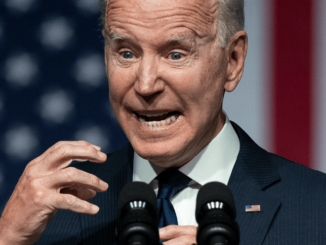
- Oil prices have fallen by more than 20% since March.
- Gasoline prices, however, have not reflected the drop.
- The ongoing pain at the pump will likely continue.
Recession fears took hold of oil markets this week, with both WTI and Brent briefly slipping below $100. Since then, Brent has rebounded above the three-digit threshold while WTI has yet to recover. This has given rise to hopes that gasoline prices could also slip further after the national average inched down from an all-time high of more than $5 per gallon. It appears, however, that there is little hope for a significant decline at the pump.
A tweet by President Biden from the July 4 weekend became viral for calling on fuel station owners to lower prices.
“My message to the companies running gas stations and setting prices at the pump is simple: this is a time of war and global peril,” Biden wrote. “Bring down the price you are charging at the pump to reflect the cost you’re paying for the product. And do it now,” Biden said.
The responses that this tweet garnered were not all positive, with some telling Biden that this is not how the retail fuel industry works, others noting that fuel station owners do not make the enormous sum of money Biden had suggested.
Even Amazon’s Jeff Bezos lashed out at the president, effectively accusing him of either deliberately misdirecting attention or demonstrating “a deep misunderstanding of basic market dynamics.”
The exchange of tweets—which continued with White House Press Secretary Karine Jean-Pierre claiming oil prices had fallen by $15 over June—was yet another sign that the price situation with fuel in the U.S. was quite complicated. According to analysts, it is likely to remain complicated as pre-election anxieties also run higher.
Tamar Essner from Vectis Energy Partners, for instance, this week told Yahoo Finance it would be a while yet before the national average falls back below $4. For this to happen, Essner said, we would need to see demand destruction.
“While we may see prices decline into this week, the drop could fade soon if oil prices reverse, especially with strong demand over the holiday,” GasBuddy’s Patrick De Haan said separately, also this week.
He struck a positive note, however, adding that “For the time being, Americans are spending nearly $100 million per day less on gasoline than when prices peaked a few weeks ago, and that’s well-needed relief at a time when gas prices remain near records.”
Essner, on the other hand, said that prices would first need to go higher before demand destruction materializes: “I think prices have to go quite a bit higher in order to see demand destruction,” she told Yahoo Finance. “What that magical number is I don’t know because we are in unprecedented times in terms of having this build of demand post COVID at the same time because of stimulus and higher disposable income.”
Some believe there is already demand destruction. Rachel Ziemba, an energy researcher, told CNBC this week that “We’re starting to see some signs of demand destruction, particularly for gasoline, but it’s really just off some of the highs of last year, when gasoline prices were much cheaper.”
“All these consumption metrics we look at are actually still higher now than they were this time in 2019, when gasoline prices were definitely cheaper, when a lot of other goods were cheaper. And when the U.S. economy was also in a fairly robust state,” Ziemba added.
According to the AAA, the average gasoline price in the United States as of Wednesday was $4.779 per gallon. This was down from $4.865 per gallon a month ago and more than a $0.20 decline from the all-time high recorded in June.
Crude oil prices, meanwhile, fell to the lowest in 12 weeks earlier this week on deepening recession fears. The decline was boosted by the American Petroleum Institute’s estimate of a build in crude oil inventories to the tune of close to 4 million barrels in the last week of June.
Source: Oilprice.com



